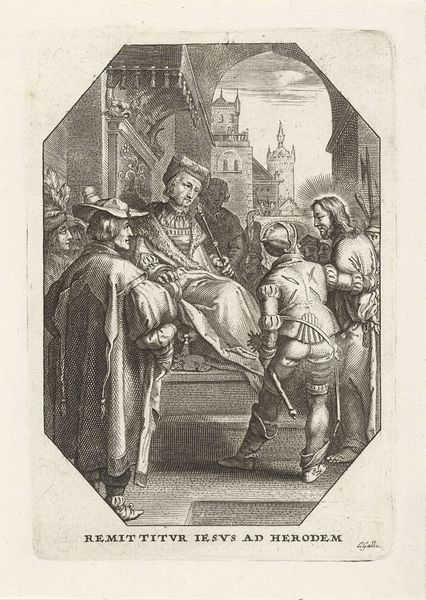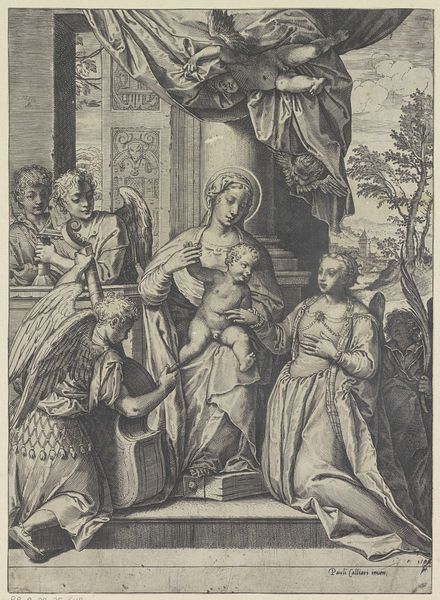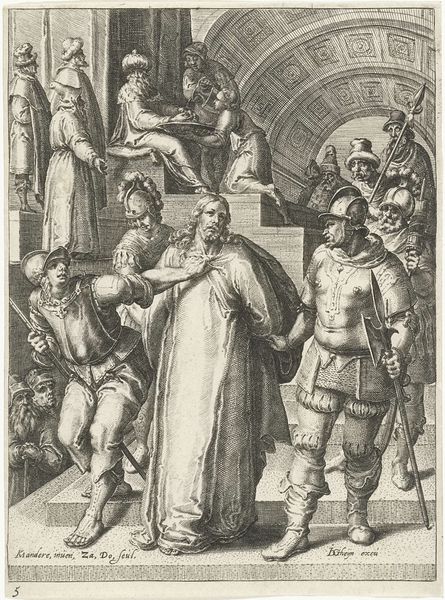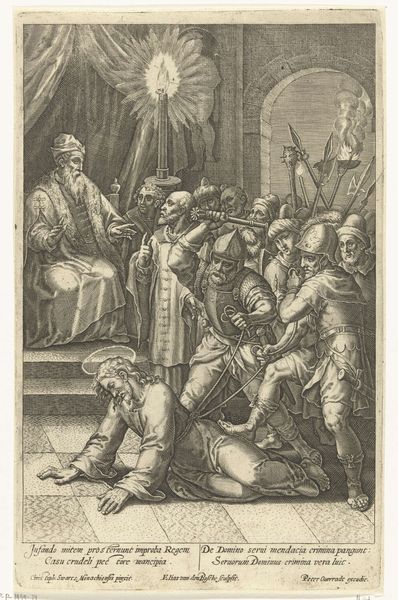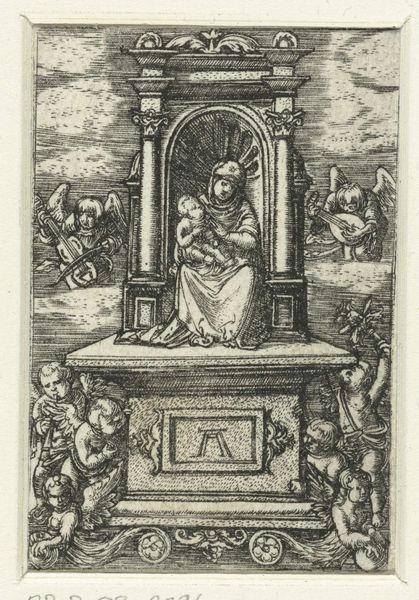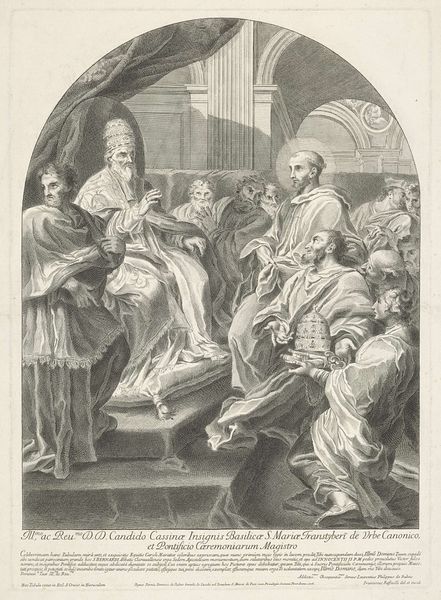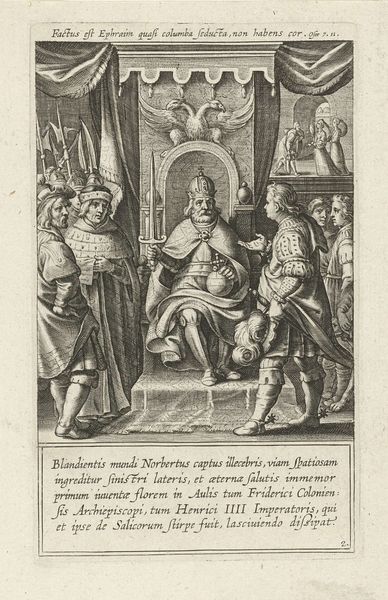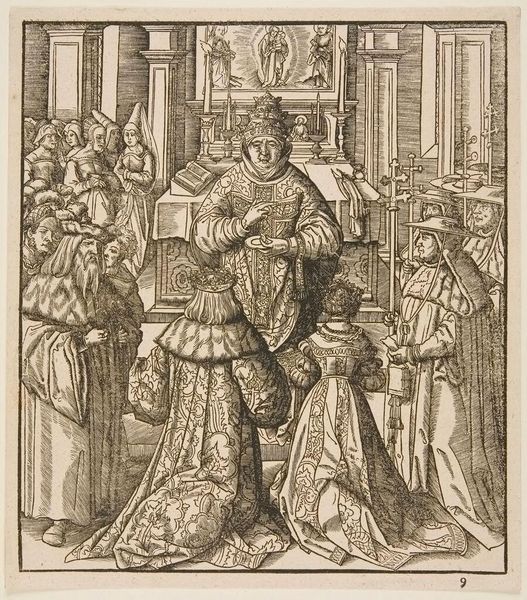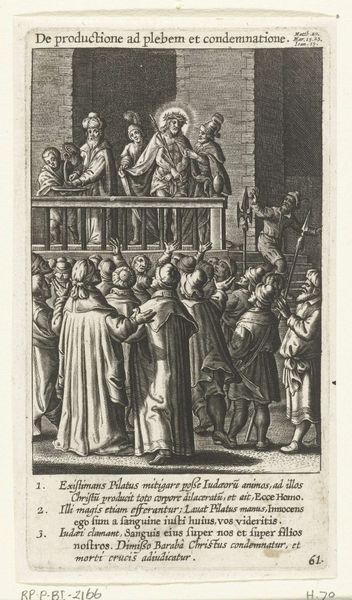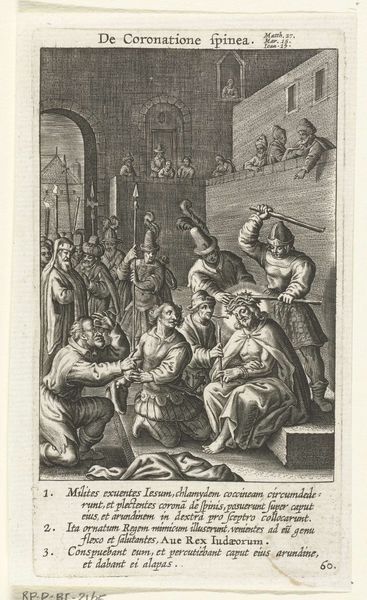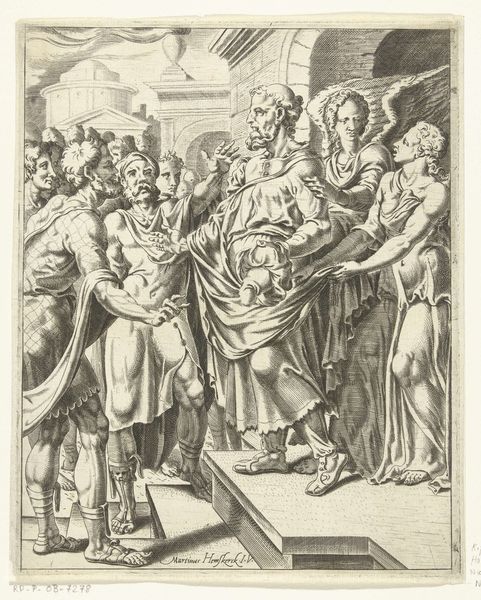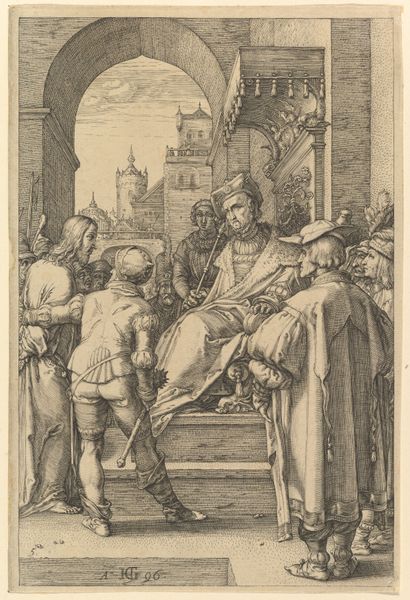
Allegorische titelprent met de Nederlandse Maagd geflankeerd door Willem van Oranje en prins Maurits 1629 - 1680
0:00
0:00
print, engraving
#
portrait
#
allegory
#
baroque
# print
#
figuration
#
history-painting
#
engraving
Dimensions: height 215 mm, width 163 mm
Copyright: Rijks Museum: Open Domain
Curator: This print, "Allegorische titelprent met de Nederlandse Maagd geflankeerd door Willem van Oranje en prins Maurits," created sometime between 1629 and 1680, attributed to Jacob van Meurs, employs engraving as its primary medium. It's quite intricate. Editor: My first thought? What a heavy piece. It's like the artist crammed all of Dutch history into one frame. There's a tension, a sense of burden carried by that central female figure. Curator: Absolutely. Consider the historical context: the Dutch Republic's struggle for independence. The Dutch Maiden, symbolizing the Netherlands, is literally framed by Willem and Maurits, crucial figures in this fight. This reflects the material resources being organized around the state at the time to maintain political structures. Editor: She looks… exhausted. Not exactly the triumphant national icon I'd expect. Her sword lies casually across her lap almost forgotten. I'm struck by the scenes happening on both sides through those architectural arches, what are they trying to convey? Curator: One appears to depict a public execution, a stark representation of justice, order maintained through brute labor in support of State power, while the other illustrates battle and warfare which in that time, constituted not just national self-defense, but a central activity around the organization of political order and the creation of markets through colonization.. They demonstrate both consequences of power during the establishment of a nation. Editor: It feels almost like a warning, you know? “Freedom isn't free, it's wrought through grim, brutal reality.” The contrast between the idealized Maiden and the gritty scenes is stark. Even the baroque styling feels subdued somehow, more about utility than sheer beauty. The social contract is visualized here. Curator: I concur. We're not presented with simple heroic tropes. The print reflects a complex web of political figures and their motivations, also showing the true price paid and difficult realities on which the nascent Republic stands. The engraving process itself, demanding meticulous skill and labor, echoes this careful negotiation. The work shows very deliberately how the state depends on this grim backdrop of extraction and use of labour power. Editor: So, beyond the posed figures, beyond even the grand symbolism, the power in the piece is it showcases something of an apology and rationale in justifying the creation and expansion of the state itself? I did not realize such brutal social mechanisms were so clearly highlighted in artworks of that era. Curator: Precisely. It reminds us of the hands that built, defended, and ultimately paid for this vision of nationhood through their work and capital. Editor: Quite right. Next time I see a Maiden representing some nation I’ll consider this piece. Thanks for drawing the curtain to all those machinations, It makes it all that more profound.
Comments
No comments
Be the first to comment and join the conversation on the ultimate creative platform.
